Were there once oceans on Mars? Scientists have found what they believe to have been a vast Martian coastline. From Slate Magazine:
Was This Once a Vast Martian Coastline?

Were there once oceans on Mars? Scientists have found what they believe to have been a vast Martian coastline. From Slate Magazine:
Was This Once a Vast Martian Coastline?
 The story is dramatic. The North Korean 14,000 dwt bulk carrier Chong Chon Gang was stopped by the Panama Canal Authority. A container, believed to carry undeclared military weapons was found hidden in a cargo of bagged sugar. The Korean crew of the ship allegedly violently resisted the Panamanian searchers. The captain of the Korean ship was reported to have attempted suicide when the ship was boarded.
The story is dramatic. The North Korean 14,000 dwt bulk carrier Chong Chon Gang was stopped by the Panama Canal Authority. A container, believed to carry undeclared military weapons was found hidden in a cargo of bagged sugar. The Korean crew of the ship allegedly violently resisted the Panamanian searchers. The captain of the Korean ship was reported to have attempted suicide when the ship was boarded.
Initially, this story sounds reasonably predictable. North Korea has been caught repeatedly smuggling arms and narcotics in recent years. The case of the Chong Chon Gang, however, quickly get strange. The ship, when arrested, had not come from North Korea, but from Cuba, and the military equipment found aboard was odd. As reported by the New York Times, “Cuba’s Ministry of Foreign Affairs issued a statement saying the cargo stashed in the vessel, the Chong Chon Gang, consisted of “240 metric tons of obsolete defensive weapons” bound for North Korea, where it was to be repaired and then sent back to Cuba.” They described the equipment as ““two anti-aircraft missile complexes Volga and Pechora, nine missiles in parts and spares, two Mig-21 Bis and 15 motors for this type of airplane, all of it manufactured in the mid-twentieth century”.
This weekend, the Metropolitan Waterfront Alliance City of Water Day will be sponsoring celebrations and activities all around the harbor. Festivities will be held at Governor’s Island, New York and in Liberty State Park on the New Jersey side as well at 25 other locations throughout the harbor.
City of Water Day 2013 – Join the Fun!
Check out some of what is going on:
Continue reading
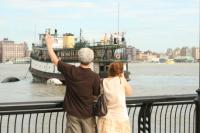
Well-wishers bid farewell to the Yankee Ferry as it’s tugged from Pier 12 toward Red Hook, Brookyln Photo: Hoboken Patch
About two years, ago we posted about two historic vessels in New York harbor, the ferry Yankee and the tanker Mary Whalen. In the space of two days, two different real estate and design publications featured articles about the grand old vessels, prompting us to ask “Are Historic Ships Getting Trendy in the Big Apple?”
We may have been overly optimistic. As it turns out both historic ships have had their share of real estate issues. The ferry Yankee was recently evicted from a berth in Hoboken and the tanker Mary A. Whalen has been looking for a suitable home for some time now. Fortunately for both ships, and for ship lovers in New York and environs, it looks just possible that both vessels may find a home on the other side of the harbor from Hoboken in Red Hook, Brooklyn.
Hoboken’s Loss is Brooklyn’s Gain – the Ferry Yankee Crosses the Harbor
Last week, the Lion’s Club of Darwin, Australia held their 40th Annual Beer Can Regatta. The regatta raises funds for local charities through a fun event which is described as “uniquely Territorian in character and spirit.” Apparently nothing says Darwin, Australia like bear and boats. Sounds like a great place to me. As reported by the BBC: Now in its 40th year, the regatta has grown to include more than 65 beer can boats. Some are made from more than 1,500 empty cans, some range 12m in length and some come from countries as far as Canada and Belgium. For those who do not know how to build a beer can boat, the Darwin Lion’s Beer Regatta Association has its own “Canstructors Guide to Canstructing a Can Boat.” Some race competitors are on permanent display at The Australian National Maritime Museum in Sydney. Some of the competitors from last year:
 You probably didn’t see “Sharknado,” a made-for-cable movie on the SyFy channel last night. I didn’t either and we should probably consider ourselves fortunate to have missed it. Or maybe not. It has been hard to ignore, however, as a “Sharknado” frenzy erupted on social media, particularly Twitter. According to Alexander Abad-Santos writing in Atlantic Wire, the number of mentions the movie received on Twitter rivaled those of the presidential debates last year. According to Amar Toor, writing in the Verge blog, “At its peak, the film was generating more than 5,000 tweets per minute,….undoubtedly impressive for a low-budget cable movie about airborne killer sharks.” It was also huge on Google Trends, rocketing to the #2 spot. The movie itself apparently only attracted between 1 and 2 million viewers. Nevertheless, it made quite a splash on the internet.
You probably didn’t see “Sharknado,” a made-for-cable movie on the SyFy channel last night. I didn’t either and we should probably consider ourselves fortunate to have missed it. Or maybe not. It has been hard to ignore, however, as a “Sharknado” frenzy erupted on social media, particularly Twitter. According to Alexander Abad-Santos writing in Atlantic Wire, the number of mentions the movie received on Twitter rivaled those of the presidential debates last year. According to Amar Toor, writing in the Verge blog, “At its peak, the film was generating more than 5,000 tweets per minute,….undoubtedly impressive for a low-budget cable movie about airborne killer sharks.” It was also huge on Google Trends, rocketing to the #2 spot. The movie itself apparently only attracted between 1 and 2 million viewers. Nevertheless, it made quite a splash on the internet.
‘Sharknado’ Was the Only Thing Worth Talking About Last Night
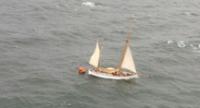
The “Wyvern” just before it sank, taken by the Swedish helicopter rescue crew. PHOTO: Sjöfartverket
In a tragic twist, the engineer from the Dutch topsail schooner Wylde Swan is presumed to have drowned while attempting to assist the sinking Norwegian ketch Wyvern.
When the Wyvern began taking on water while sailing in the Baltic in the Tall Ships Races 2013 from Aarhus to Helsinki, she requested assistance from other vessels in the fleet. The Dutch topsail schooner Wylde Swan dispatched three crew members including the vessel’s engineer, Koen van Gogh, with a bilge pump to Wyvern in hopes of slowing the flooding on the historical ketch. The ten person crew aboard the Wyvern were successfully rescued but only two of the three crew from the Wylde Swan returned. The engineer, Koen van Gogh, is presumed to have drowned when the Wyvern sank on Thursday morning.
A US Navy’s X-47B Unmanned Combat Air System drone, nicknamed Salty Dog 502, successfully landed on the deck of the aircraft carrier USS George HW Bush at sea. The Navy press release reads, in part: “Today’s demonstration was the first time a tailless, unmanned autonomous aircraft landed on a modern aircraft carrier…” The Washington Post commented on the ability of the drone to operate independently of remote pilot control: While the X-47B still followed a flight path scripted by personnel on the ground, it executed the landing entirely on its own, calculating by itself how fast to approach the ship and precisely when to put its wheels down. Thanks to Alaric Bond and Irwin Bryan for passing along the news.

Photo: Vesselfinder.com
Following an out of control fire, the forward section of the container ship MOL Comfort finally sank yesterday. The ship had broken in half twenty four days ago on June 17th in the Arabian Sea, bound from Singapore to Jeddah, loaded with 4,500 containers. Initially both sections of the ship remained afloat, until on June 27, the stern section sank while under tow.
An attempt was made to salvage the forward section as well, but a fire broke out in the cargo over the weekend while under tow. Following attempts to get the fire under control, the forward portion of the ship sank in the Indian Ocean near 19’56″N 65’25″E at 19:00 on July 10 UTC in approximately 3,000 meters of water. Approximately 1,600 metric tons of fuel oil and other oils were estimated to be in the tanks of the fore section of the ship when it sank. Thanks to Anton for the heads up.
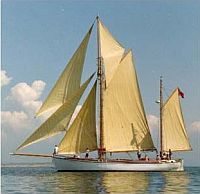 The gaff ketch Wyvern sank this morning while sailing in the Baltic as a Class B vessel in the Tall Ships Races 2013 from Aarhus to Helsinki. According to Sail Training International: She began taking on water earlier today at the centre of the southern tip of Öland and Hoburgen, Gotland’s southern tip. The crew of ten were all air-lifted and are safe ashore at Kalmar airport.
The gaff ketch Wyvern sank this morning while sailing in the Baltic as a Class B vessel in the Tall Ships Races 2013 from Aarhus to Helsinki. According to Sail Training International: She began taking on water earlier today at the centre of the southern tip of Öland and Hoburgen, Gotland’s southern tip. The crew of ten were all air-lifted and are safe ashore at Kalmar airport.
Wyvern was a 60′ yacht built by Colin Archer in 1897. After a long and varied career, the yacht was restored and given to the Stavanger Maritime Museum in Norway in 1984. She sailed in many national and international regattas and and has won both her own class and overall in regatta legs in The Tall Ships’ Races. She participated in the Cutty Sark Tall Ships’ Race six times.
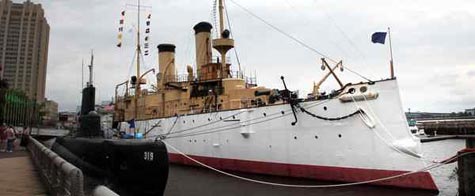 Two groups on opposite coasts of the United States are frantically working to save the 1895 built, SS Olympia, Admiral Dewey’s flagship in the Battle of Manila Bay and the last, just barely, surviving war ship from the Spanish-American War. The Mare Island Historic Park Foundation in Vallejo, California and the South Carolina Olympia Committee in Port Royal, South Carolina are the two remaining groups from a set of five cities and six organizations that had applied two years ago to take ownership of the Olympia. The two groups are now working together to save the historic ship, but time is running out and funds are short.
Two groups on opposite coasts of the United States are frantically working to save the 1895 built, SS Olympia, Admiral Dewey’s flagship in the Battle of Manila Bay and the last, just barely, surviving war ship from the Spanish-American War. The Mare Island Historic Park Foundation in Vallejo, California and the South Carolina Olympia Committee in Port Royal, South Carolina are the two remaining groups from a set of five cities and six organizations that had applied two years ago to take ownership of the Olympia. The two groups are now working together to save the historic ship, but time is running out and funds are short.
In February of 2010, the Independence Seaport Museum in Philadelphia announced that it could not afford to keep the historic SS Olympia. The ship has not been drydocked since 1945 and is, not surprisingly, in terrible shape. There was even talk of sinking her as an artificial reef, but that possibility was precluded by the estimated $10 million cost to dredge the berth around the old ship in order to move her from the dock in the Delaware River. Fortunately the scandal plagued museum lacked the money to even sink the ship.
 At the end of last October, the South Street Museum’s Waterfront Director, Captain Jonathan Boulware, and his crew of staff and volunteers scrambled to secure the museum’s historic ships, including two aged windjammers, moored on the East River, before they were struck by Superstorm’s Sandy’s storm surge. They successfully kept the ships afloat and undamaged. Sadly, the same could not be said of the seaport itself or the shore-based Seaport Museum which suffered an estimated $22 million in damage.
At the end of last October, the South Street Museum’s Waterfront Director, Captain Jonathan Boulware, and his crew of staff and volunteers scrambled to secure the museum’s historic ships, including two aged windjammers, moored on the East River, before they were struck by Superstorm’s Sandy’s storm surge. They successfully kept the ships afloat and undamaged. Sadly, the same could not be said of the seaport itself or the shore-based Seaport Museum which suffered an estimated $22 million in damage.
Now, the Museum of the City of New York has pulled out of the management of the museum, and Captain Boulware has been appointed interim president. Together with a transitional board of three trustees, he is tasked with overseeing the historic ships as well as the museum’s operations and collections. The transitional board made up of Christie Huus, David Sheehan and Tracey Knuckles is seeking new management and funding for the troubled museum. The challenges of keeping the struggling museum afloat may dwarf those of saving the fleet from the ravages of Sandy.
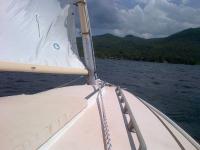 I will admit that I am not a lover of wooden vessels. An admirer from afar, perhaps. The truth is that I am afraid of rot. I don’t understand it, and, as is often the case, I fear what I don’t understand. And, I doubt that I would like rot, even if I did understand it. Frankly, I like fiberglass. There I said it. And I am not ashamed.
I will admit that I am not a lover of wooden vessels. An admirer from afar, perhaps. The truth is that I am afraid of rot. I don’t understand it, and, as is often the case, I fear what I don’t understand. And, I doubt that I would like rot, even if I did understand it. Frankly, I like fiberglass. There I said it. And I am not ashamed.
Two months ago, I bought a Herreshoff America 18 catboat, an example of what I consider to be “classic plastic,” a timeless design, built to last. Built in 1973, at forty years old, her hull is still solid and sound. She is on at least her second sail (she only has one, a 250 square foot gaff rigged main.) Her aluminum mast is original as are her boom and gaff. I am only her third owner, or so the last owner told me. The first owner is said to have owned her for close to 39 years. In this case, the sailor wore out before the boat. He is said to have sold the catboat when he was in his 80s and couldn’t sail anymore. The next owner found that he was too busy to sail, kept her for a season, and then passed the boat along to me (in exchange for a cashier’s check.)
 How much would sea levels fall if all ships were removed all at once from the oceans of the world? Far less than you might think.
How much would sea levels fall if all ships were removed all at once from the oceans of the world? Far less than you might think.
To put this in content, according to UNCTAD, in January 2011, there were over 100,000 seagoing commercial ships in service, with a combined capacity of around 1.4 billion deadweight tons. According to calculations run by the “What if ” website, if all the worlds ships were to be removed at the same time, the sea level of the worlds’ oceans would fall by “about six microns—slightly more than the diameter of a strand of spider silk.” Click here to read more. Thanks to Brooks Rowlett for pointing out the article on the MarHist list.
A new video released by the Bermuda Department of Conservation Services explores the wreckage of the British mail steamship “Caraquet” which came to grief on the island’s reefs 90 years ago.
Caraquet 1864 – Bermuda Shipwrecks from Conservation Services on Vimeo.
Green Seas has an interesting pilot project seeking crowdfunding to deliver aid supplies to hurricane-prone areas of Nicaragua on the organization’s Chinese junk. Donations pay for supplies.
Help GREEN SEAS deliver Humanitarian Aid to Nicaragua on our Ship
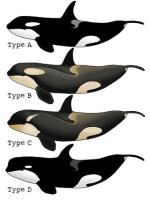 The title of the paper published in the journal Polar Biology doesn’t help much, unless you are biologist. The paper is titled, “Mitogenomic insights into a recently described and rarely observed killer whale morphotype.” Lara Sorokanich writing in National Geographic translates the news into layman’s English. Her article is titled, “Rare Breed of Killer Whale May Be New Species.” Scientists studying the skeleton of a rare type “D” orca now believe that the unusual type of orca may be its own species or at least a sub-species. As reported in National Geographic:
The title of the paper published in the journal Polar Biology doesn’t help much, unless you are biologist. The paper is titled, “Mitogenomic insights into a recently described and rarely observed killer whale morphotype.” Lara Sorokanich writing in National Geographic translates the news into layman’s English. Her article is titled, “Rare Breed of Killer Whale May Be New Species.” Scientists studying the skeleton of a rare type “D” orca now believe that the unusual type of orca may be its own species or at least a sub-species. As reported in National Geographic:
Scientists used a portion of the whale’s skeleton to map type D’s genome. They then compared their results with the genomes of the more common orcas—types A, B, and C—to determine the genetic differences among all four varieties.
The study revealed that type D’s genetic differences date back nearly 400,000 years. These ancient variations may qualify type D as an entirely new species or subspecies of killer whale, though further evidence will be needed before the proposal is confirmed.
This September, a fleet of tall ships will reenact the 1813 Battle of Put-in-Bay, Ohio, also known as the Battle of Lake Erie. The reenactment is part of the Great Lakes Tall Ships Challenge which kicks off today in Cleveland, OH through the 7th. The fleet will move to calling at 22 US and Canadian ports through the summer including Bay City, MI (July 11-14), Duluth, Minn. (July 25-28), (August 7-11) and Green Bay, WI (August 16-18). The reenactment of the Battle of Put-in-Bay on is the highlight of the Battle of Lake Erie Bicentennial. The Challenge wraps up with Tall Ships Erie in Erie, PA (September 6 – 8.)
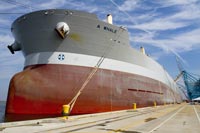
A Whale
Unfortunately, the story is not that unusual. A ship owner in financial trouble and sailors find themselves abandoned on a ship, far from home, with no wages, and running out of food and fuel. This is what has happened to 21 seafarers stranded on the ore/oiler A Whale, a Liberian-flagged ship in the Gulf of Suez. They have been stuck for six months after the vessel suffered a technical breakdown. The ore-oiler, A Whale, is owned by TMT group which last week filed for bankruptcy protection in a court in Houston.
This is not the first time that A Whale is in the news. Just three years ago during the BP Deepwater Horizon oil spill, we posted about A Whale. The ship was brand new and specially modified to skim up to 500,000 barrels of oil-contaminated water a day. A Whale was offered as the world’s largest oil skimmer. A Whale would revolutionize offshore oil skimming, if it had worked, which it didn’t. It didn’t skim oil. Now it is the home for 21 abandoned seafarers owned wages by a bankrupt company, and lacking the basics of food and fuel. Thanks to Phil Leon for passing along the news.